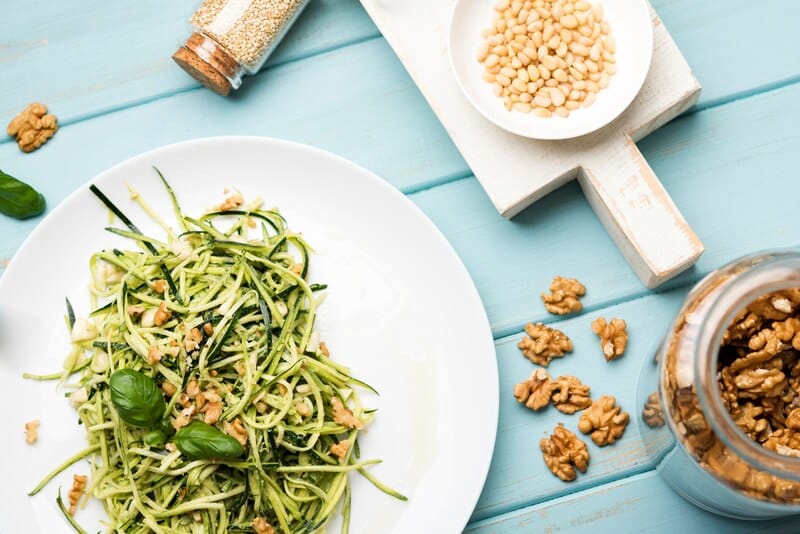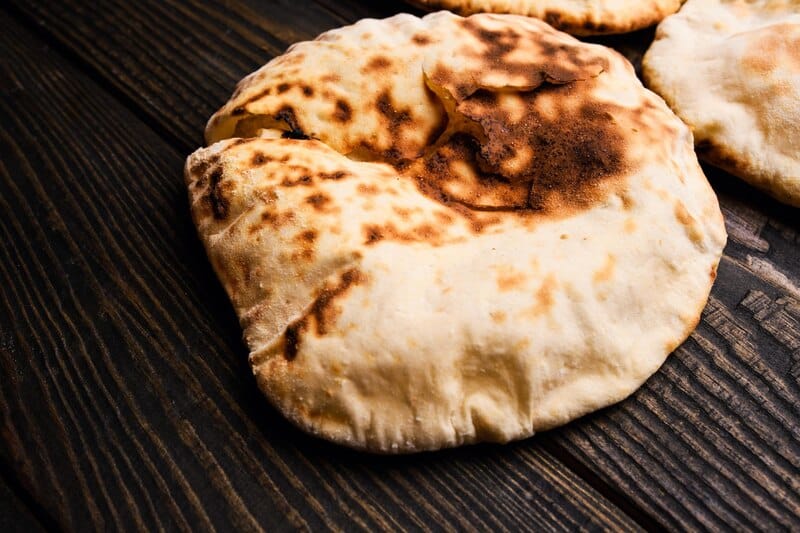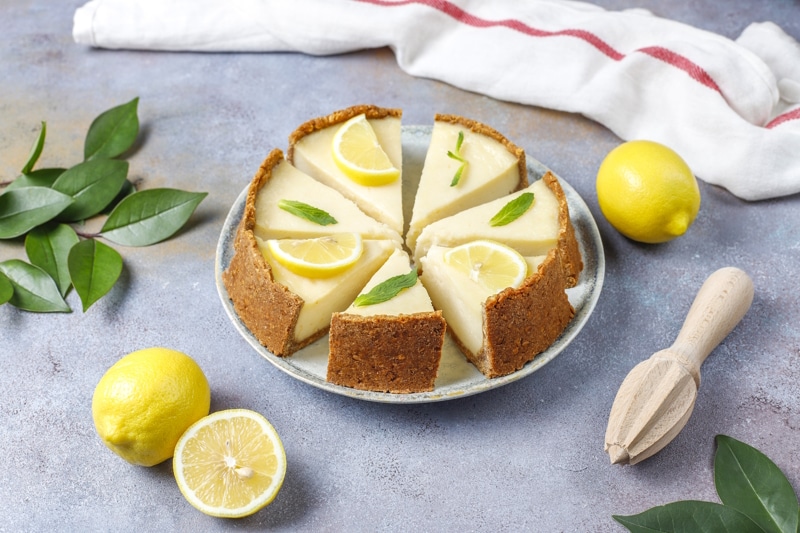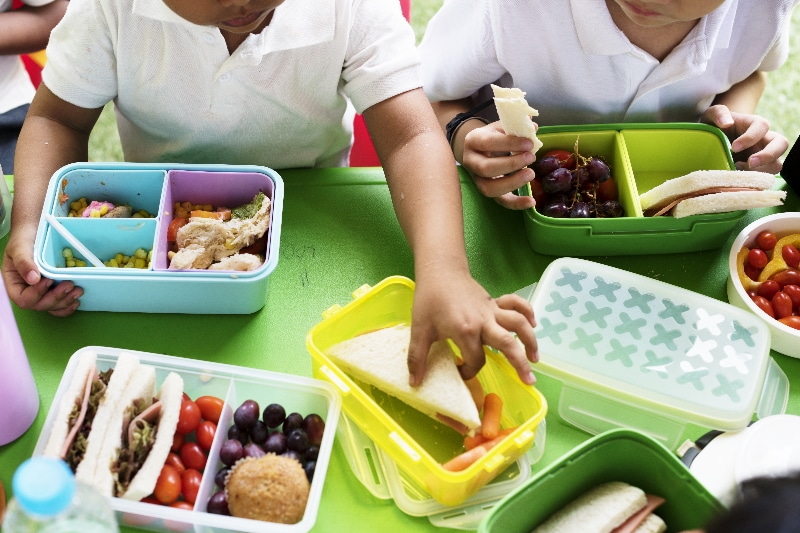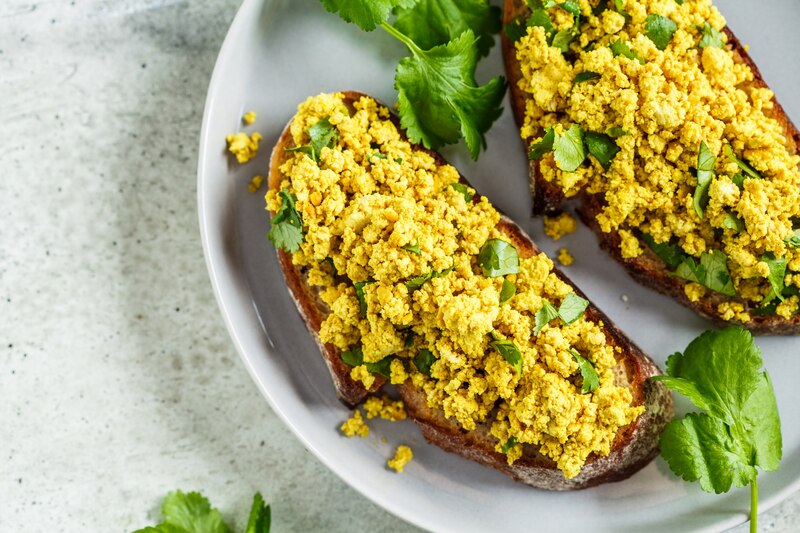Are you contemplating adopting a raw vegan lifestyle? Learn the ins and outs of the trend and potential consequences right here.
The notion of not having to roast vegetables or fry up some crispy tofu seems very attractive if cooking isn’t high on your priority list or if it’s an especially hot day. Perhaps you’ve found that you can live off of raw vegan smoothies and salads on occasion. If so, then you’ve probably experimented with raw veganism before. But what exactly does a raw vegan diet consist of? Is it suitable for everyone, too?
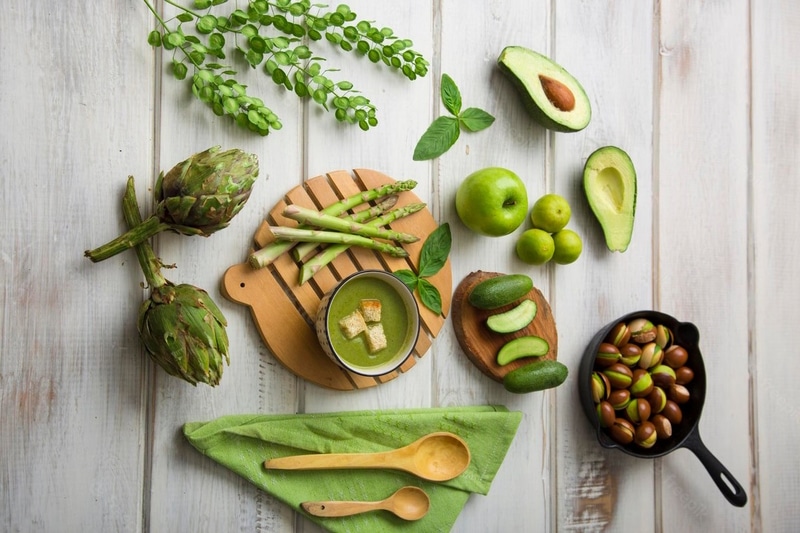
What is a raw vegan diet?
Foods eaten on a raw vegan diet are either not cooked or heated to temperatures between 104 and 118 degrees Fahrenheit. Certain nutrients are lost while cooking, which is true in some circumstances but not in others. (More to come on this.)
Those who eat a raw food diet rarely eat prepared meals. For example, you can’t eat any roasted veggies, grilled veggie burgers, cooked grains and beans, pasta, bread, most types of nut butters, jams, vegan ice cream, or pasteurized non-dairy milk because they were prepared in some other way. Obviously, this also excludes honey and any other product derived from animals. While most raw vegans avoid regular salt, some choose to use exotic varieties like Himalayan pink or sea salt.
Raw vegans believe that you can acquire all the nutrients you need from uncooked foods and are motivated mostly by health (though there is some crossover with animal rights and sustainability principles). Alternatives to standard cooking procedures include blending, juicing, soaking, sprouting, fermenting, and dehydrating.
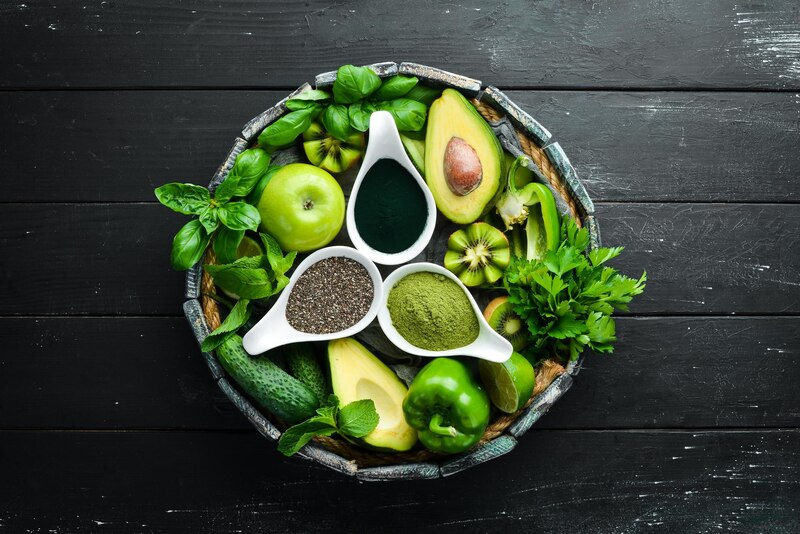
And what exactly can a raw vegan eat?
What, then, can a raw vegan eat, given the long list of forbidden items? Smashed avocado with minced cilantro and diced tomatoes over raw bread baked from nuts and seeds in a dehydrator is one example of a healthy and filling breakfast option.
Raw tahini, fresh garlic, lemon juice, and cold-pressed olive oil might be used to season a salad with chopped broccoli, red cabbage, diced shallots, unroasted sunflower seeds, dried fruit, and raw vegan cheese. This avocado-jalapeo soup is another option. These raw vegan tostadas would be a great dinner option. What’s for dessert, then? These ley lime pies require no baking. That’s a broad overview of the edible options; here’s a more detailed one:
Spices and seasonings like salt, pepper, and nama shoyu (raw, unpasteurized soy sauce)
Sauerkraut, kimchi, miso paste, and coconut kefir are just a few examples of fermented foods.
Fruit
Culinary herbs and raw spices
Yeast nutrient
Nuts
Unrefined cocoa
Wakame, Hijiki, Dulse, and Irish Moss are all examples of seaweed.
Seeds
Germinated cereals and bean products
Vegetables
While some raw vegans stay away from oils altogether, others incorporate them into their diets with the help of cold-pressed olive oil, raw coconut oil, raw flaxseed oil, and raw hemp oil. Common sources of fat include avocados, nuts, and seeds. Maple syrup, which is cooked to over 118 degrees Fahrenheit, is not allowed in most raw vegan diets, but you can easily find raw vegan recipes that incorporate it. It is safe to consume raw agave nectar.
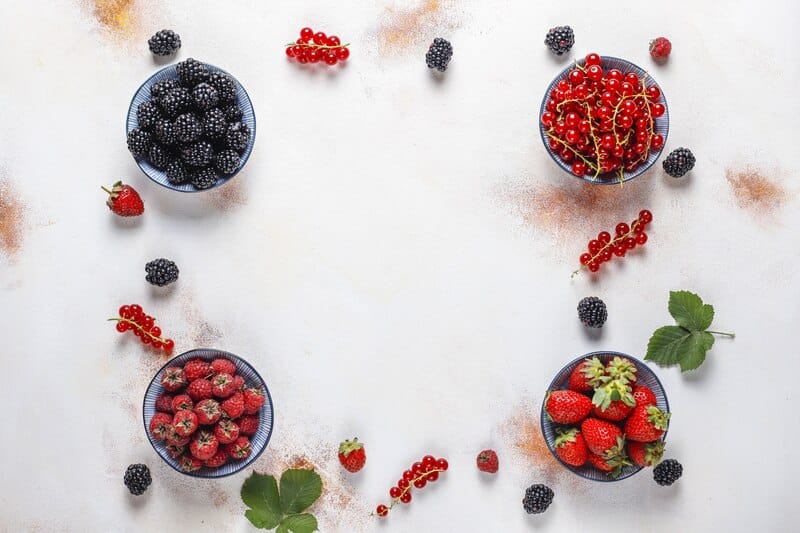
The many benefits of a raw vegan diet?
Plant-based foods, which are abundant in a raw vegan diet, are known to provide several health benefits.
It’s loaded with nutritious plant-based options.
The Harvard T.H. Chan School of Public Health found that eating lots of fruits and vegetables was associated with lower blood pressure and a decreased risk of heart disease and stroke. Grains, nuts, and seeds have all been related to improved cholesterol levels. A 2017 meta-analysis of 49 research found that plant-based diets were associated with lower levels of LDL cholesterol, also known as “bad” cholesterol. This also includes beans, which are not permitted on a raw vegan diet unless they are sprouted beforehand. Sprouts are just seeds that have started the germination process. Sprouting can be done commercially or at home in a jar with a vent.
A British Medical Journal meta-analysis of 23 research published in 2021 found that people who ate more fruits and vegetables had a decreased chance of developing Type 2 diabetes. The blood sugar-lowering effects of nuts, seeds, grains, and legumes are well-documented.
A high fiber intake is associated with decreased blood pressure and improved digestion on a raw vegan diet. Both soluble fiber (found in nuts, seeds, sprouted lentils, and sprouted barley) and insoluble fiber (found in beans, peas, and oats) are abundant on plant-based diets (vegetables and sprouted whole grains). Both are beneficial, but the latter aids in preventing constipation by feeding good gut bacteria. Both have been shown to increase satiety after eating, making them useful for weight control.
More nutrients can be found in some of those foods.
To return to the core tenet of the raw vegan diet, it is true that the nutritional value of some fruits and vegetables is diminished when they are cooked. But, it is not as simple as “raw broccoli = good, cooked broccoli = bad,” for example. Microwaving or steaming broccoli helps keep its antioxidant value, while stir-frying or boiling it reduces its vitamin C level by 38% and 33%, respectively. Vitamin C is depleted during cooking, therefore fresh fruit is a better source than cooked veggies.
A 2008 study published in the British Journal of Nutrition reported that 198 persons who adhered to a raw food diet had high beta-carotene and normal vitamin A levels, which is another benefit worth noting. On the other hand, they were deficient in the antioxidant lycopene.
Saturated fat content is minimal.
The majority of the fats consumed by raw vegans come from plant sources such nuts, seeds, and avocado, making their diet low in saturated fat. It also lacks the deep-fried meals that are a known source of free radicals, which can harm DNA, cell membranes, and other cellular components. The oxidation of the fatty acids within the oil at high temperatures is responsible for this decline in quality.
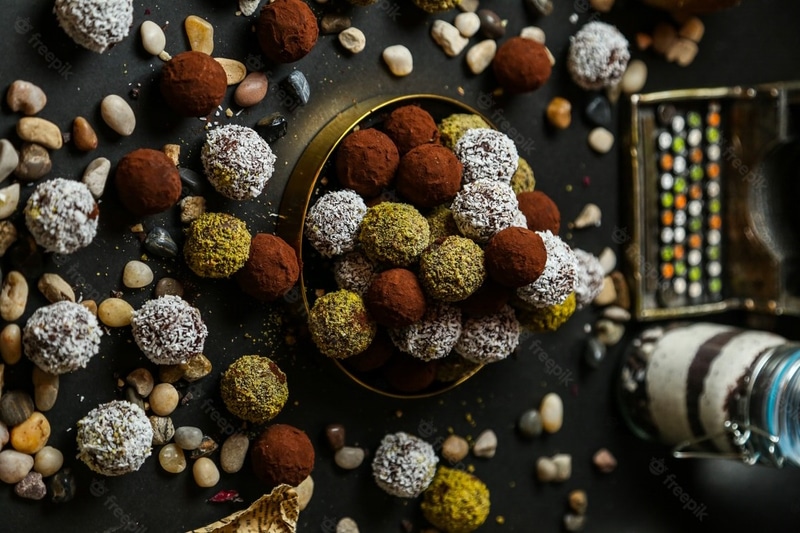
Does a raw vegan diet have any drawbacks?
No matter what kind of diet you’re thinking about trying, it’s important to weigh the benefits and drawbacks beforehand, and raw veganism is no different.
Several people have allergies to sprouts.
Food-borne illness-causing bacteria flourish in warm, humid environments, such as those in which sprouts are cultivated. The Academy of Nutrition and Dietetics reports that there have been isolated cases of E. sprouts have been connected to E. coli and Salmonella epidemics in recent years. Refrigerated sprouts are best, and you should avoid any that smell musty or look slimy. Put them in a cooler or insulated bag and put them in the fridge right away.
Culinary preparation can improve the nutritional value of some foods.
Although cooked tomatoes have less vitamin C than raw ones, they have more of the antioxidant lycopene, which protects cells and tissues from damage. This was the conclusion of a study conducted by researchers at Cornell University.
The oxalic acid in spinach, which interferes with the absorption of iron and calcium, is reduced by 53% when the vegetable is cooked. There’s more folate in it as well. Beta-carotene and antioxidant levels in cooked carrots are increased. The iodine-blocking isothiocyanates in kale are depleted during the steaming process. The Spanish Mushroom Technological Research Center found that grilling or microwaving mushrooms increased their antioxidant content. Steaming helps keep the antioxidants in vegetables like zucchini and broccoli that might otherwise be destroyed by boiling or thorough drying.
Long-term, its nutritional value is questionable.
Using fortified foods and supplements to make up for the nutrients it lacks, a well-planned plant-based diet can be suitable for people of all ages.
Among these are iodine, which lowers the risk of thyroid disease, calcium, which is vital to bone health, zinc, and vitamin B12, which helps build DNA and supports blood and nervous system health (aids in immune system and metabolism function and wound healing). Vitamin B12, calcium, and vitamin D all likely to be deficient in raw vegan diets, according to research.
Although iodine is crucial to proper thyroid function, raw vegans often advise against using iodized salt.
Not everyone can use it.
It’s unclear whether or not a raw vegan diet can be maintained over time. Bread, cooked grains, and cooked legumes are all off limits, making it difficult to consume enough calories on a daily basis without excessive snacking. It takes time to dehydrate food, chop vegetables, extract juice, and sprout seeds. The high price of prepared sprouted and dehydrated foods makes a long-term raw food diet out of reach for many people.

A beginner’s guide to the raw vegan diet
The easiest approach to learn about the benefits of a raw vegan diet is to give it a try for a few meals. Raw Vegan Swedish Truffles, Raw Vegan Tostadas, and Raw Vegan Coconut Cauliflower “Stir-Fry” with Zesty Lime Dressing are just a few of our favorite raw vegan recipes that you should try. You may find many other free recipes online with only a few clicks of your mouse. A cookbook, such as Modern Raw by Rachel Carr or Raw, is a good choice if you like a curated variety. Vegan. Not Yucky. by Laura Miller could be exactly what you need.

